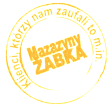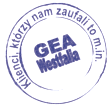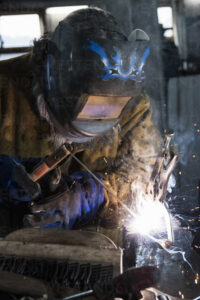Tools used for welding
MMA WELDING MACHINES
They are particularly appreciated by amateurs and in workshops not strictly specialised in welding. They consist of a ground cable with clamp, a cable with electrode holder and a power source. In addition, two more subcategories can be distinguished in this group:
- transformer welders,
- inverter welders.
MIG/MAG WELDING MACHINES
Used for welding metals, possibly thicker aluminium components. Most commonly found on production halls and construction sites.
TIG WELDING MACHINES
This is the most versatile and common welding method. They are used for more precise work with high-quality welds due to the low currents that allow small parts, such as
So how do you choose a welding machine for yourself? Here is a list of the most important criteria you should consider.
- Amperage - the thicker the material, the higher the amperage, the more current it consumes and the more stable the electrical installation requires. Welders up to 250A are used amateur or in production workshops. Above this value - on construction sites and in industry.
- Efficiency and duty cycle - that is, the percentage of time the unit is running per 10 minutes. If, for example, the manufacturer reports the efficiency of the 80%, they mean 8 minutes continuous operation and 2 minutes pause.
ATTENTION: Under no circumstances should you buy a welding machine that does not mention the duty cycle!
WELDING WIRES
- 0.8 mm thick wire - maximum 1 mm thick sheet metal,
- 1.2 mm thick wire - 2 mm to 8 mm thick sheet metal,
- 1.6 mm thick wire - 8 mm to 16 mm thick sheet metal,
- 2 mm thick wire - 16 mm and over sheet metal.
If you walk into a hardware shop looking for welding wire, you will come across the SG3 (G4SI1) and SG4 (G3SI1) markings. These indicate the grade of wire. In addition to homogeneous wires, there are also cored wires (so-called powdered wires) marked as FCAW (Flux-Cored Arc Welding). They are characterised by an internal flux filling (e.g. chlorine and nickel for alloyed steels) or substances that give off neutral gases when burned. This wire is more expensive than commonly used and requires special welding machines to function. It is most commonly used in the shipbuilding industry.
PROTECTIVE CLOTHING
Apron, gloves and most importantly - the mask. Regardless of the quality of the equipment and the professional qualifications, it is essential to choose the right protective clothing.
EN ISO 11611 - this is the official designation of the standard that certified welding garments must comply with. It is worth remembering that it should be sewn from materials of natural origin. They are harder to set on fire and, in the event of an incident, do not melt or stick to the skin.
Bonnet darkening, on the other hand, is measured in DIN units. The higher the darkening, the safer our eyesight is, but also the more difficult it is to control the performance. This is why it is better to aim for slightly more expensive, but safer and more efficient automatic visors.

































